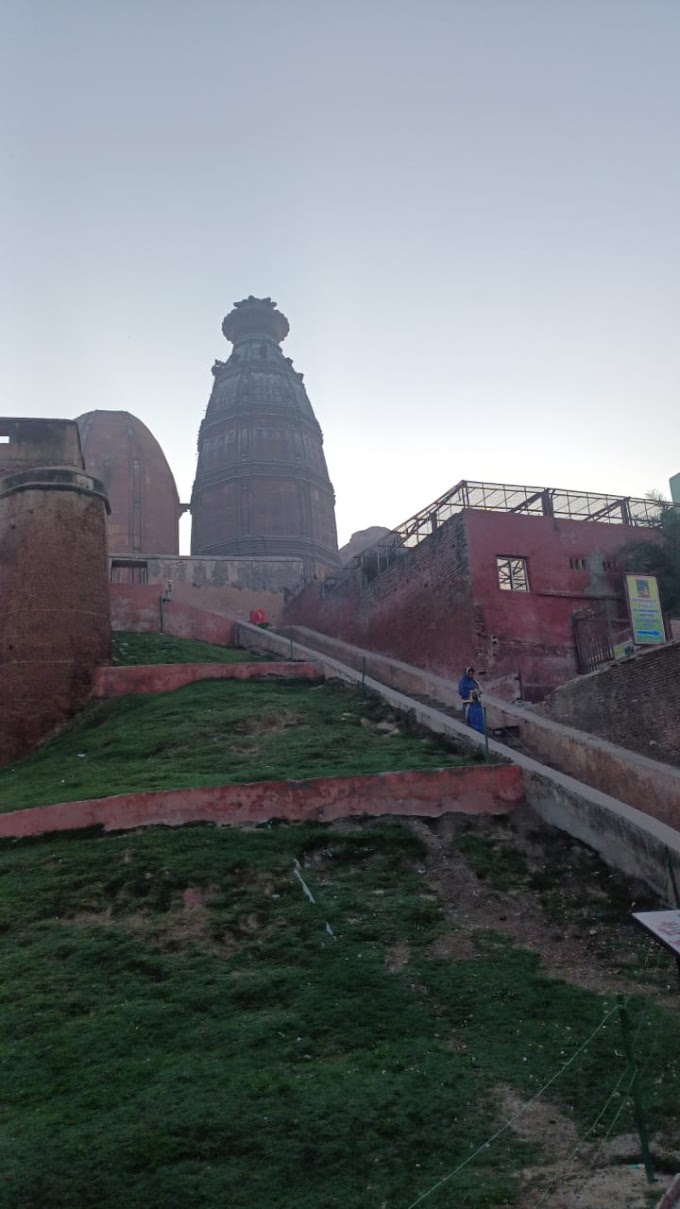Introduction:
Step back in time to the era of the Pandavas, as we embark on a fascinating journey through the historical tapestry of Delhi during the Mahabharata period. Delhi, a city with a rich and diverse heritage, has been witness to countless tales of valor, intrigue, and culture. In this exploration, we unveil the hidden gems that echo the footprints of the Pandavas, showcasing the city's enduring legacy.
Indraprastha - The Mythical Citadel:
At the heart of the Mahabharata narrative lies Indraprastha, the mythical city believed to have been founded by Yudhishthira. While no archaeological evidence directly supports its existence, the legend of Indraprastha lives on in the landscape of Old Delhi. Roaming through the narrow alleys of Chandni Chowk, one can almost sense the echoes of a majestic citadel that once stood, a testament to the Pandavas' grandeur.
Purana Qila - Tryst with Time:
Purana Qila, or the Old Fort, stands as a sentinel of Delhi's past. With its massive walls and imposing gates, it's easy to imagine the grandeur of an ancient fortress. According to local lore, Purana Qila stands on the same grounds where the Pandavas built their magnificent city. The fort's serenity and architectural marvels make it a must-visit, offering a glimpse into the city's storied history.
Jantar Mantar - Astronomical Marvels:
Constructed by Maharaja Jai Singh II, Jantar Mantar is an astronomical observatory that might not directly relate to the Mahabharata period but symbolizes India's enduring fascination with science and astronomy. As we delve into the wisdom of the Pandavas, Jantar Mantar becomes a reminder of the scientific advancements that coexisted with the tales of mythology.
Formerly Varahmihir Observatory now Qutub Minar
Acharya Varahmihir, a revered figure in ancient Indian astronomy, is attributed with the creation of numerous astronomical instruments and observatories. Among these, there is a compelling endeavor to establish the Merustambh in Mehrauli, Delhi, as a remarkable astronomical observatory crafted by Varahmihir himself. To substantiate this claim, a comprehensive exploration into the necessity, timeline, structure, and historical significance of the Merustambh, now known as the Qutub Minar, is essential. This exploration delves into the intricate details of its architecture, including its broken part, alongside a meticulous examination of the available evidence, aiming to unveil the profound astronomical legacy encapsulated within this iconic monument.
Dilli Haat - Cultural Bazaar:
In the spirit of the Pandavas' cosmopolitan city, a visit to Dilli Haat becomes essential. This vibrant marketplace, showcasing diverse arts and crafts from across India, mirrors the multicultural ethos that might have thrived in ancient Indraprastha. From traditional handlooms to regional delicacies, Dilli Haat is a living testament to Delhi's cultural heritage.
Conclusion:
As we traverse through Delhi's historical landscape, the connection between the city and the Mahabharata period becomes palpable. The tales of the Pandavas come alive in the architecture, the markets, and the very essence of Delhi. This exploration not only unravels the mystique of ancient legends but also celebrates the city's resilience, echoing the footsteps of heroes who once walked these streets.
Historical monuments of Mughal Era
Delhi, the capital city of India, is a treasure trove of history and culture, boasting a rich tapestry woven through centuries of dynasties, empires, and civilizations. As we embark on a journey through the annals of time, we unearth a list of the famous tourist places in Delhi that have withstood the test of time, each echoing the whispers of a bygone era.
Qutub Minar:
Standing tall amidst the ruins of the ancient city of Mehrauli, Qutub Minar is a testament to the grandeur of the Mughal era. Built in the 12th century, this UNESCO World Heritage Site is adorned with intricate calligraphy and geometric patterns, narrating the stories of the dynasty that once ruled the region.
Red Fort (Lal Qila):
A symbol of India's struggle for independence, the Red Fort stands majestically along the banks of the Yamuna River. Constructed by Emperor Shah Jahan, this colossal fortress, with its red sandstone walls, has witnessed centuries of royal splendor and historic events.
Humayun's Tomb:
Tucked away in the heart of Delhi, Humayun's Tomb is a masterpiece of Mughal architecture. Built in the 16th century, it serves as the final resting place of the Mughal Emperor Humayun and is surrounded by lush gardens, water channels, and intricate Persian-style architecture.
Jama Masjid:
As the largest mosque in India, Jama Masjid stands as an epitome of architectural brilliance. Commissioned by Emperor Shah Jahan, it boasts a courtyard capable of accommodating thousands of worshippers and offers panoramic views of Old Delhi.
Lotus Temple:
In stark contrast to the medieval wonders, the Lotus Temple is a contemporary marvel. Shaped like a lotus flower, it is a Bahá'í House of Worship and a serene retreat from the bustling city life.
Tughlaqabad Fort:
Built by the enigmatic Tughlaq dynasty, the Tughlaqabad Fort stands as a formidable structure with massive stone walls and imposing bastions. The sprawling ruins reflect the ambition and grand vision of the dynasty.
Hauz Khas Village:
Nestled amidst the historic ruins of the Hauz Khas complex, the Hauz Khas Village is a vibrant hub of art, culture, and contemporary lifestyle. It seamlessly integrates the ancient reservoir and madrasa with modern cafes, boutiques, and art galleries.

.gif)





.png)

0 Comments